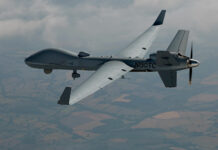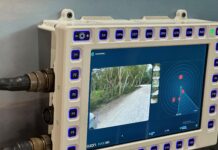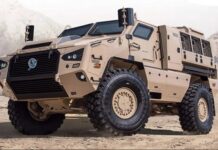The 33rd Australia-US Ministerial Consultations (AUSMIN), held in Brisbane on 29 July 2023, saw the two countries further deepen their defence ties, including with a more extensive US military presence in Australia.
The talks, which brought together US Defense Secretary Lloyd J Austin, US Secretary of State Antony Blinken, Australian Deputy Prime Minister Richard Marles and Australian Minister of Foreign Affairs and Trade Penny Wong, reaffirmed a commitment from the two countries to ‘operationalise’ their alliance in the face of a perceived threat from China. They coincided with the multinational Exercise ‘Talisman Sabre 2023’, set largely across northern Australia, which began on 22 July and concludes on 4 August.
In a press conference following the talks Marles stated, “During the course of our deliberations today, we are reminded that, as our defence force personnel have been side by side today, they have, in fact, been side by side with each other for more than a century, during which Australians and Americans have fought together in every conflict during that time. The alliance is built upon that. It’s built upon the shared values which underpin that. And all four of us, in our conversations today, feel the legacy of that history.”
A key output of the latest AUSMIN talks were the initiatives on enhanced force posture co-operation, including the following measures:
- The continued upgrading of key Australian bases in the north, including RAAF Bases Darwin and Tindal;
- The scoping of additional upgrades at new locations: RAAF Bases Scherger and Curtin;
- More regular and longer expeditionary visits of US submarines to Australia starting this year, with a focus on HMAS Stirling, as Australia prepares for Submarine Rotational Force-West: an important milestone for the AUKUS Optimal Pathway;
- A regular rotation of US Army watercraft in Australia, starting with participation in the currently ongoing Exercise ‘Talisman Sabre’;
- Delivery of the Combined Logistics, Sustainment, and Maintenance Enterprise (CoLSME) to support high-end warfighting and combined military operations in the region, including establishing an interim location for this at Albury-Wodonga (Bandiana) as a precursor to an enduring Logistics Support Area in Queensland;
- Enhanced air co-operation, rotating US Navy maritime patrol and reconnaissance aircraft to Australia to enhance regional maritime domain awareness with the goal of inviting like-minded partners to participate;
- An intent to declare enhanced space co-operation as a new force posture initiative, allowing increased space integration and co-operation under the US-Australia Force Posture Agreement, as well as stating an intent to increase space integration and co-operation in existing operations and exercises.
The 33rd AUSMIN talks also saw the United States and Australia commit to enhanced defence-industrial co-operation. While the AUKUS partnership between the two countries and the United Kingdom will already see industrial co-operation to deliver to Australia a conventionally armed, nuclear-powered submarine capability, Washington and Canberra have now agreed to advance co-operation on Australia’s Guided Weapons and Explosive Ordnance (GWEO) Enterprise. This will be done by entering into an arrangement to collaborate on a flexible guided weapon production and maintenance capability in Australia, with an initial focus on the co-production of Guided Multiple Launch Rocket Systems by 2025.

The United States also announced its intent to pursue reforms to the regulations governing the transfer of guided weapons to Australia with the aim of accelerating deliveries, transferring technical data for the M795 155 mm artillery shell in support of future production in Australia, and identifying opportunities for Australian industry to address constraints in the US industrial base.
Thirdly, the two countries reaffirmed their commitment to progress the maintenance, repair, overhaul, and upgrade of priority munitions in Australia, with an initial focus on MK-48 heavyweight torpedoes and SM-2 surface-to-air missiles.
Beyond purely bilaterial initiatives, the latest AUSMIN talks saw the United States and Australia advance a number of key priorities to strengthen their mutual alliances, partnerships, and trilateral and multilateral security arrangements. Specifically these include the following measures:
- An intent to develop concrete proposals with Japan for trilateral co-operation that will increasingly invite Japanese participation in exercises and training-related activities in Australia, including F-35 co-operation;
- Enhancing trilateral integrated air and missile defence co-operation with Japan;
- Exploring opportunities to opportunities to further deepen co-operation with regional partners, including Japan, India, Indonesia, the Philippines, and South Korea, creating a dividend for security and stability in the Indo-Pacific;
- Committing to leverage – in consultation with Pacific Island countries – the planned deployment of a US Coast Guard Cutter to the Pacific in early 2024 to further maritime domain awareness and training in the region to address maritime security priorities, including measures against illegal, unreported, and unregulated fishing;
- A reaffirmed commitment to enhance interoperability with the militaries of the Pacific through a range of exercises. In this regard the two countries welcomed Fiji, Indonesia, Papua New Guinea, and Tonga’s participation in Exercise ‘Talisman Sabre’ for the first time this year, as well as the presence of India, Singapore, Thailand, and the Philippines as inaugural observers.
The AUSMIN talks concluded on something of a subdued note when it emerged that four Australian soldiers had died on 28 July when their MRH-90 Taipan helicopter crashed off the coast of Queensland.
Peter Felstead












